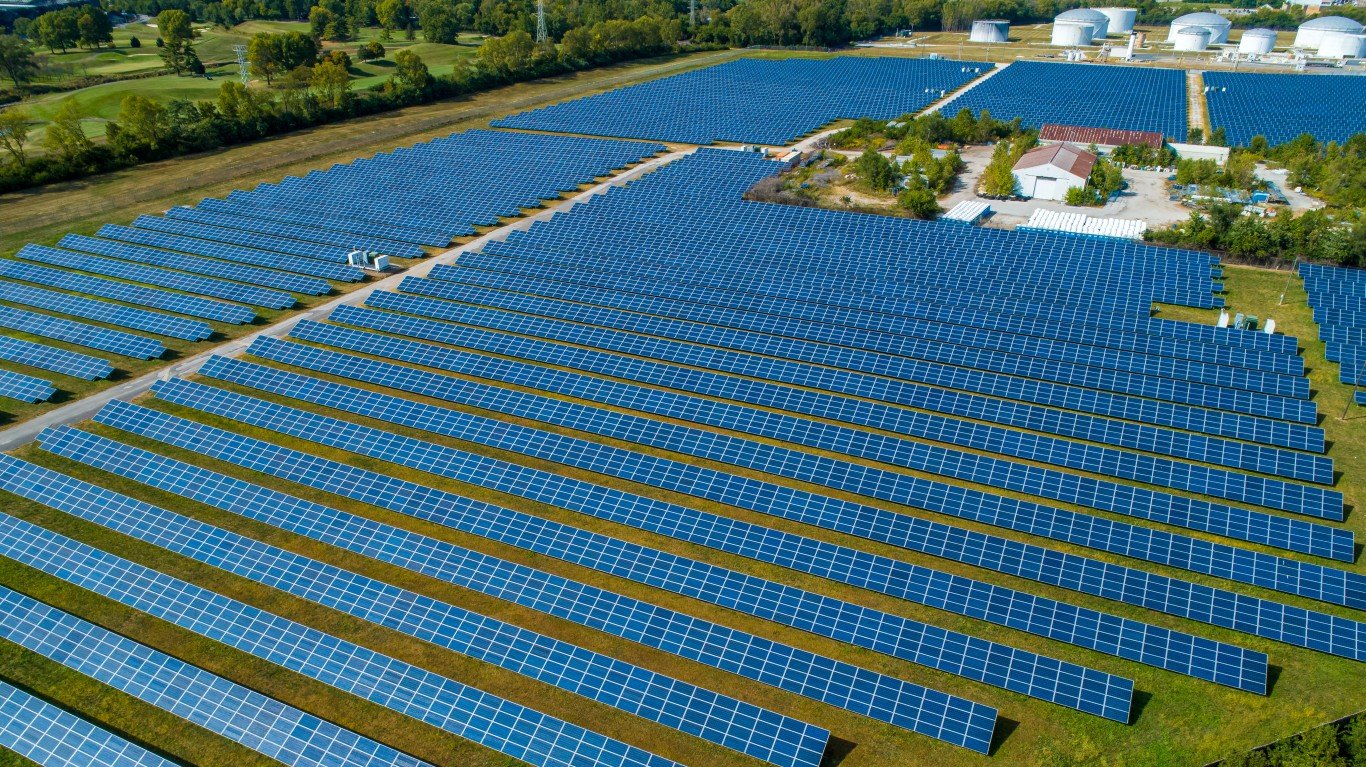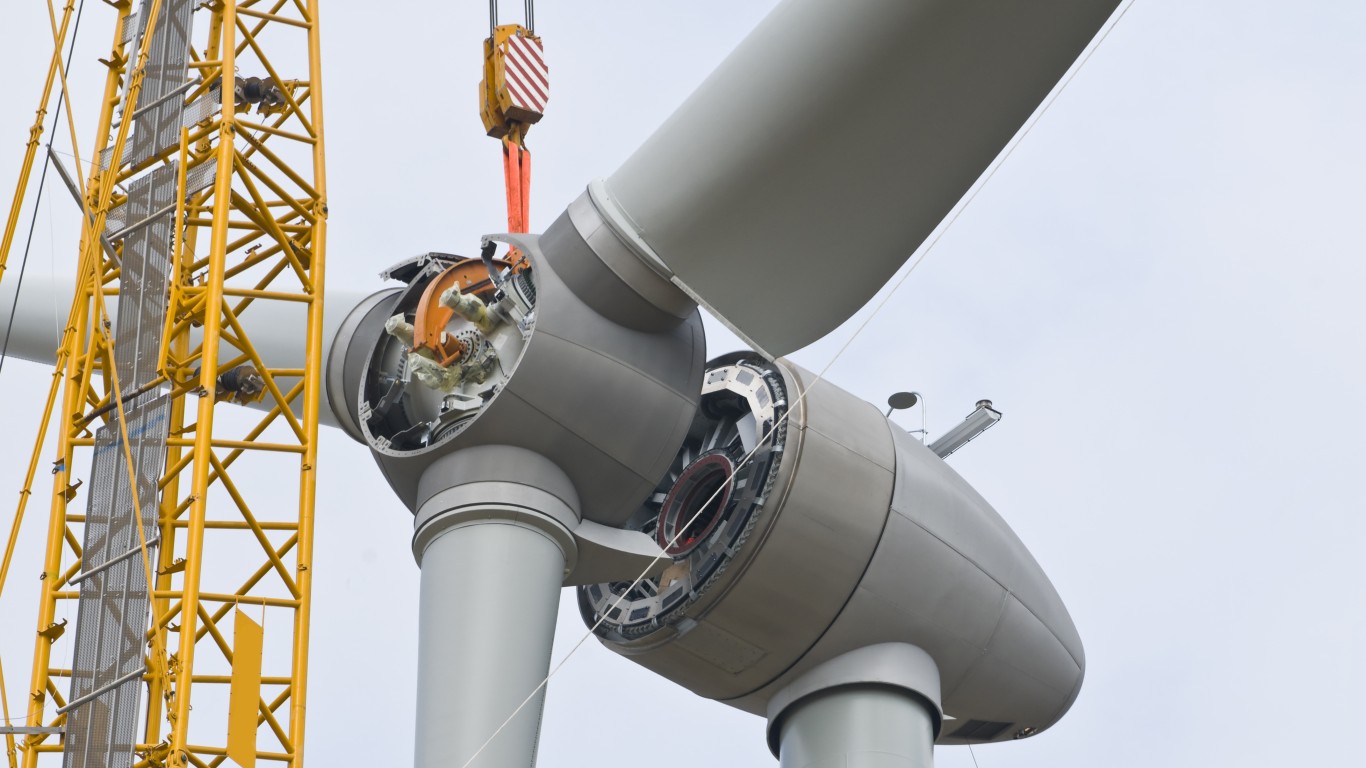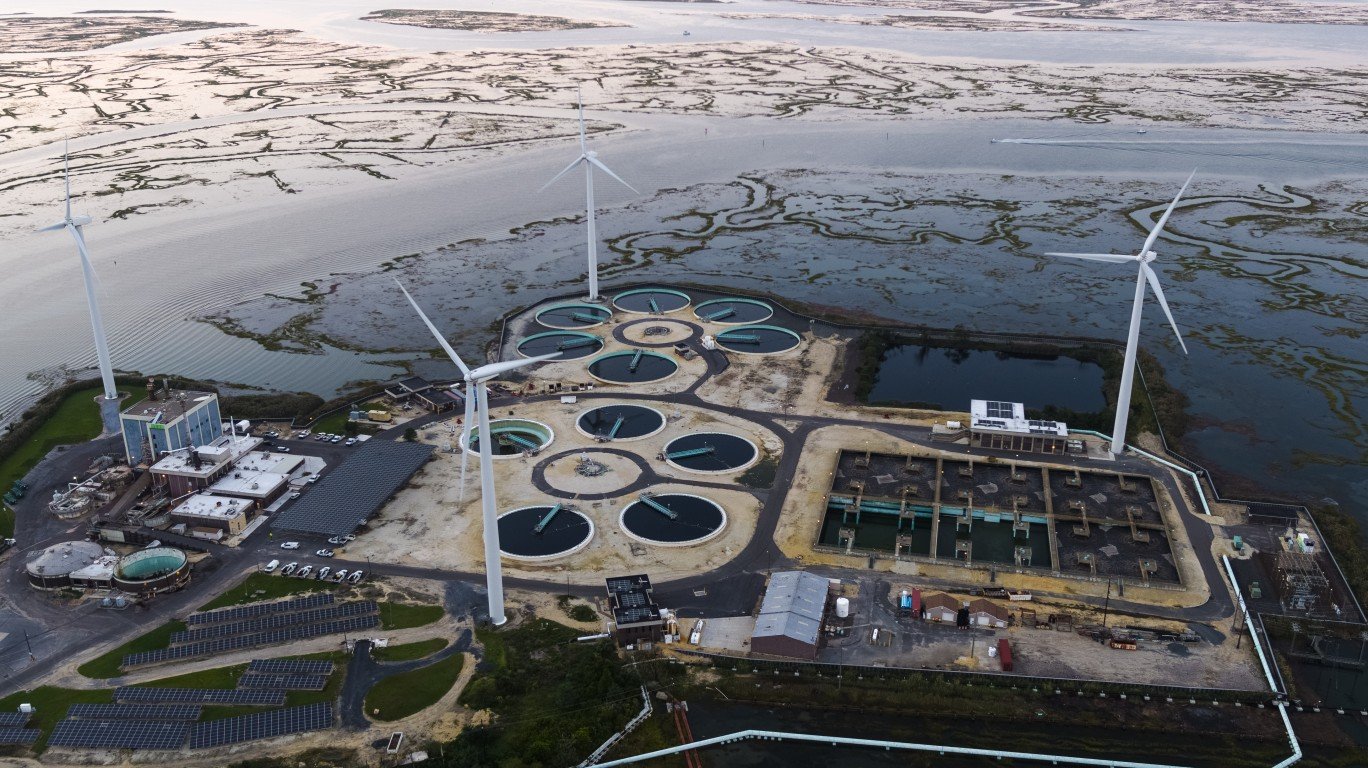
28. Indiana
> Potential jobs created under Inflation Reduction Act in 2030: 1 for every 290 people (23,568 total)
> Potential new jobs as a share of current unemployed population: 23.1%
> Unemployed population in 2022: 101,811 (3.0% of labor force)
> Energy-related carbon dioxide emissions in 2021: 24.4 metric tons per person (65.0% higher than avg.)

27. Iowa
> Potential jobs created under Inflation Reduction Act in 2030: 1 for every 290 people (11,092 total)
> Potential new jobs as a share of current unemployed population: 23.6%
> Unemployed population in 2022: 46,961 (2.7% of labor force)
> Energy-related carbon dioxide emissions in 2021: 22.9 metric tons per person (54.5% higher than avg.)

26. Alabama
> Potential jobs created under Inflation Reduction Act in 2030: 1 for every 289 people (17,557 total)
> Potential new jobs as a share of current unemployed population: 29.6%
> Unemployed population in 2022: 59,358 (2.6% of labor force)
> Energy-related carbon dioxide emissions in 2021: 21.5 metric tons per person (45.0% higher than avg.)

25. Oklahoma
> Potential jobs created under Inflation Reduction Act in 2030: 1 for every 288 people (13,914 total)
> Potential new jobs as a share of current unemployed population: 24.4%
> Unemployed population in 2022: 56,979 (3.0% of labor force)
> Energy-related carbon dioxide emissions in 2021: 22.0 metric tons per person (48.7% higher than avg.)

24. New Jersey
> Potential jobs created under Inflation Reduction Act in 2030: 1 for every 287 people (32,689 total)
> Potential new jobs as a share of current unemployed population: 18.6%
> Unemployed population in 2022: 175,691 (3.7% of labor force)
> Energy-related carbon dioxide emissions in 2021: 9.6 metric tons per person (35.0% lower than avg.)





